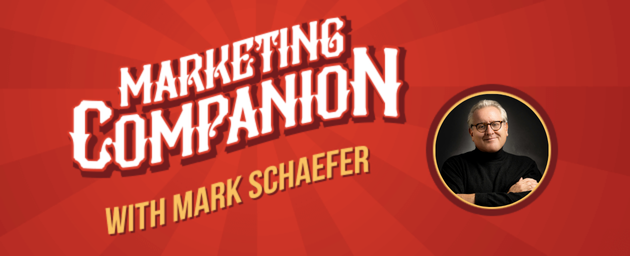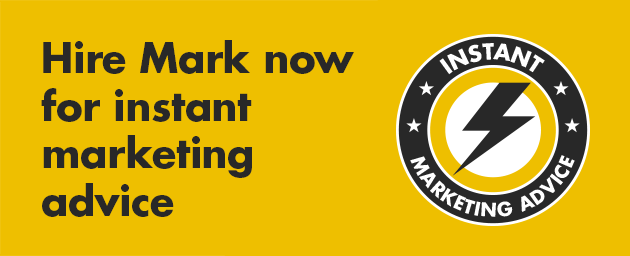Writing a book is hard. Delivering a keynote speech is hard. But turning a book into a speech? That’s another creative challenge altogether.
I discovered this firsthand when I took my book Marketing Rebellion: The Most Human Company Wins and transformed it into a keynote that I’ve since delivered around the world. Along the way, I learned that while books and speeches share the same DNA, they live in very different bodies.
In this post, I want to take you behind the curtain on that process—what it takes to distill a book’s ideas into a speech that moves an audience. If you’ve ever written a book and wondered, Could this become a talk?, or if you’re crafting a presentation anchored in deep thought leadership, I hope this helps.
Books and Speeches Are Different Species
A book is a marathon. A speech is a sprint.
Books allow for nuance, research, footnotes, and slow-building arguments. You have the reader’s attention for hours, maybe even weeks, as they read at their own pace. You can meander, take detours, introduce subplots, and trust that the cumulative weight of ideas will eventually land.
Speeches, on the other hand, are live theater. You don’t get footnotes. You don’t get a second draft. You have the audience’s attention for maybe 30–45 minutes—and in that time you have to capture hearts, ignite imaginations, and leave behind a single, unforgettable message.
Here’s the brutal truth: nobody remembers everything you say. They remember one thing. Maybe two.
So the first principle of turning a book into a speech is this: boil your 60,000 words down to a few sticky, emotional, repeatable ideas.
Choosing the Core
When I finished Marketing Rebellion, I had 12 chapters, each brimming with stories, data, and case studies. The temptation was to include everything in the speech—after all, every idea was precious to me.
But an audience doesn’t want “everything.” They want clarity. They want a compass.
The key question is: If my audience only remembers one thing, what should it be?
For Marketing Rebellion, that one thing was: The most human company wins.
That simple phrase became the north star of the speech. Everything else—every story, case study, and slide—had to serve that central idea. If it didn’t, it got cut.
When you’re building your own speech, go hunting for that north star. It might be a phrase, a metaphor, or even a story that encapsulates your book. That’s the spine of your talk.
Story as Structure
Books are built on chapters. Speeches are built on stories.
When I re-read my manuscript with “speech goggles” on, I realized that not every insight translated well to a stage. Some passages were powerful on the page but lifeless aloud. Others were buried in the book but sparkled when spoken.
The stories that made it into the keynote were the ones that carried emotional weight:
- The man in the Netherlands who tattooed a brand logo on his body—not for money, but for belonging.
- The case study of Procter & Gamble’s Pampers brand, which pivoted its entire message to center around parenting moments instead of diapers.
- The story of how consumer trust had collapsed, and why that forced brands to reinvent themselves.
Notice what ties these together: they’re not “bullet points.” They’re moments.
On stage, stories become the containers for your ideas. The brain is wired to remember narratives, not lists. A book can support lists with charts, diagrams, and deep dives. A speech has to make ideas stick through story.
Editing with a Chainsaw
The hardest part of this process wasn’t adding. It was cutting.
My first attempt at a speech draft came in at nearly 90 minutes. No meeting planner in the world is booking a 90-minute keynote.
I had to cut, cut, and cut again. The rule I adopted: if it doesn’t make them feel something, it doesn’t make the cut.
Data without emotion was gone. Explanations without story were gone. Secondary arguments—gone.
That hurt. But speeches demand discipline.
When you’re building your talk, put every idea through this filter:
- Does it support the core message?
- Does it make them feel something?
- Is it memorable in a single telling?
If the answer to any of these is no, out it goes.
Designing the Visuals
A book is words. A speech is words plus images.
When I created slides for Marketing Rebellion, I made a crucial mistake: I thought my slides were there to summarize my words. Wrong.
Slides are not your notes. They are visual reinforcement.
I learned to strip down text, lean into images, and create moments of visual surprise. For example, when I talk about the collapse of consumer trust, I don’t show a bullet list of statistics. I show a crumbling brick wall. That image does more emotional work in a second than a chart ever could.
Great slides don’t repeat what you’re saying—they amplify it.
The Rhythm of the Room
Books have chapters. Speeches have beats.
As I practiced the Marketing Rebellion talk, I realized I needed to vary the rhythm:
- A big story that pulls them in.
- A short burst of data to ground it.
- A moment of humor to lighten the load.
- A question to make them reflect.
- Then another big story to drive the point home.
Audiences experience talks emotionally, not linearly. Your job is to create an emotional arc that rises, falls, and rises again—ending with a crescendo that lingers.
For me, that crescendo is the line: The most human company wins. Every story in the keynote climbs toward that peak.
Practicing the Performance
Writing a book is solitary. Giving a speech is communal.
Once you’ve got a draft of your keynote, you need to test it in the real world. The first time I delivered the Marketing Rebellion speech, I realized sections that felt strong on paper fell flat live. Other parts I thought were secondary ended up generating the biggest audience reactions.
That’s humbling—and essential.
You don’t know what works until you’re in the room with human beings. Their faces, their laughter, their silence—that’s your real editor.
So my advice is: rehearse in front of people. Pay attention not just to what you say, but how the room feels. And then iterate.
The Human Connection
The biggest surprise in my own journey? The speech wasn’t really about the book at all.
Yes, the ideas came from Marketing Rebellion. But the live talk became its own thing. It wasn’t about chapters or citations. It was about me, on stage, connecting with human beings in real time.
That’s why people don’t just want information in a keynote—they want you. They want your conviction, your vulnerability, your passion. They want to see you wrestle with the ideas, not just recite them.
So while your book may give you credibility, your humanity gives you impact.
Lessons I’d Pass Along
Looking back on the process of turning Marketing Rebellion into a keynote, here are the big lessons I’d share with any author attempting the same:
- Find the North Star. What’s the one idea you want them to remember? Everything else orbits around it.
- Lead with Story. Choose moments and case studies that hit emotionally.
- Edit Brutally. Cut anything that doesn’t make them feel something.
- Think Visually. Slides should amplify, not repeat.
- Craft Rhythm. Build an emotional arc, not just an outline.
- Test Live. The audience is your ultimate editor.
- Bring Yourself. It’s not about the book—it’s about human connection.
Why This Matters
You may be thinking: That sounds like a lot of work. Why not just write a speech from scratch?
Good question.
The truth is, a book gives you a foundation. It establishes your credibility, research, and perspective. It tells the world you’ve done the work. But when you transform that book into a speech, you give the ideas a new life. You make them portable. You make them human. You reach people who might never read the book but will remember a moment, a story, a phrase.
For me, Marketing Rebellion was a book that marked a turning point in my career. But it was the speech that took that message global. It carried me into boardrooms, conference halls, and auditoriums across continents. And every time I step on stage, I’m reminded: the work of a book isn’t finished when it’s printed. It’s finished when it’s spoken, shared, and lived.
A Final Word
If you’re an author, don’t let your book gather dust on a shelf. It can become a living thing.
A book is ink on paper. A speech is fire in the room.
And in a world that desperately needs human connection, maybe what your book needs most is a voice—your voice—bringing its ideas to life.
Because in the end, the most human message wins.


